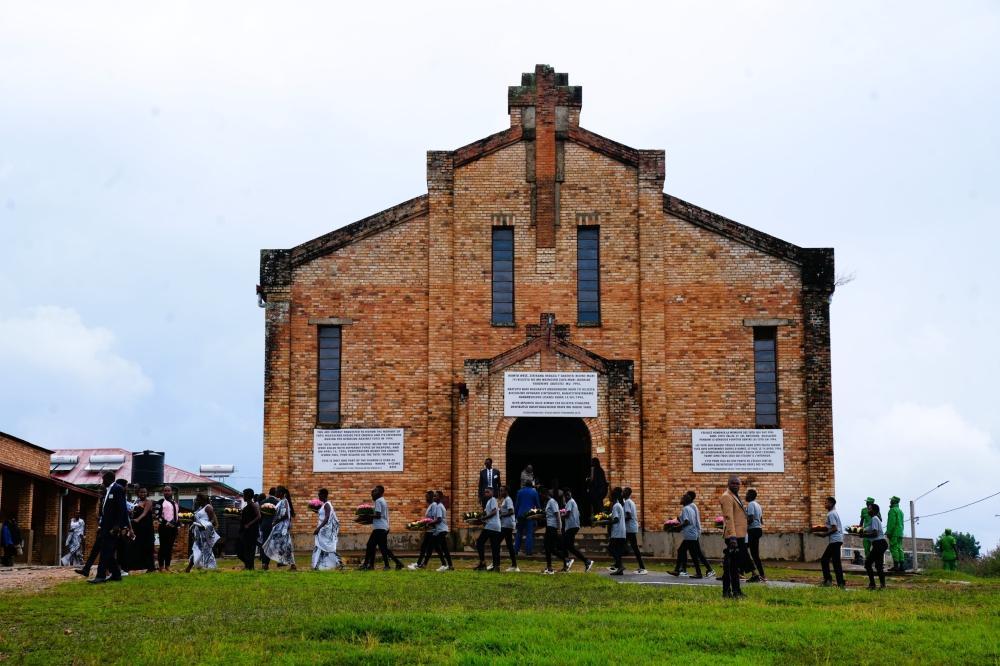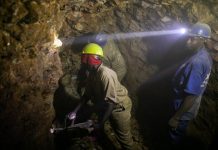Africa-Press – Rwanda. The Genocide against the Tutsi continued to escalate on April 15, 1994, across Rwanda. Killers—including the Interahamwe militia, national police, and government soldiers—relentlessly hunted down Tutsi individuals.
Among the most heinous acts of violence occurred in Nyange, a locality in the former Kivumu Commune, where a church building was demolished with a bulldozer, crushing more than 2,000 Tutsi who had sought refuge inside.
Many Tutsi had fled to Nyange Catholic Parish for safety, but the Interahamwe surrounded the church, trapping the refugees inside before using a bulldozer to crush the structure.
Gregoire Ndahimana, the mayor of Kivumu, conspired with the church’s priest, Athanase Seromba, to facilitate these killings. Following the genocide, Ndahimana was indicted by the International Criminal Tribunal for Rwanda (ICTR) for his role in the conspiracy against the Tutsi. In 2013, he was convicted of genocide and crimes against humanity, receiving a 25-year prison sentence.
In Nyaruguru, many Tutsi sought refuge at Muganza Catholic Parish after their homes were burned and their lives threatened. On April 11, 1994, 8,600 Tutsi refugees were registered there in the morning; by evening, the number had risen to 11,000.
However, on April 15, a militia group—supported by government soldiers—stormed Muganza and murdered the Tutsi inside. During the same period, another massacre occurred at Cyahinda Parish, Nyaruguru, claiming 32,000 lives between April 14 and 15.
Further violence unfolded in various regions on April 15, including Ntarama, Bugesera, where approximately 3,000 Tutsi were killed in a church; and in Ruhengeri, now Musanze, where over 400 Tutsi, primarily from Gakenke, were lured to the High Court premises under false promises of safety, only to be horrifically massacred.
Dismas Nzanana, the Sous-prefet of the area, had assured them protection and safe passage to the DR Congo. Instead, on April 15, 1994, Interahamwe attackers struck, killing numerous Tutsi gathered there. Those who survived were later taken to Ruhengeri hospital and executed at Mukungwa River using grenades and other brutal methods.
Coordinated killings also took place that day in Kibuye, Kibungo, Kigali-Ngali, Butare, Gitarama, Kigali City, and Gikongoro.
At Nyarubuye Catholic Parish in Kirehe district, many Tutsi from the surrounding communes sought refuge. They managed to fend off initial attacks on April 14, but on April 15, a combined force of gendarmes, soldiers, and militiamen descended on the parish, resulting in widespread slaughter. Research conducted by Professor Paul Rutayisire and Privat Rutazibwa identified 742 individuals involved in the Nyarubuye massacres.
As the violence escalated in Kigali, numerous Tutsi were killed at a roadblock on Nyamirambo Hill near Mount Kigali, where survival was nearly impossible.
Hassan Rubayiza, one of the Interahamwe leaders at that roadblock, was later convicted by Gacaca Courts and sentenced to life in prison for his role in the genocide. Ladislas Ntaganzwa, a former bourgmestre of Nyakizu, played a pivotal role in the attacks by calling for gendarmes from Butare to assist the Interahamwe; he also received a life sentence for his actions.
In Kamonyi, killers ruthlessly used machetes on men and boys without killing them outright, subsequently loading them into vehicles and disposing of their bodies in the Cyoganyoni water dump of Bishenyi marshlands.
On April 15-16 in Rwamagana, a significant incident occurred when Tutsi refugees at the Muhazi Commune offices attempted to fend off an Interahamwe attack with two guns they had obtained from the commune. During the assault, a Tutsi government soldier named Kanamugire broke into the commune building, securing some firearms for Tutsi refugees.
Armed with these guns, they managed to repel their attackers and fled towards Lake Muhazi, hoping to use boats to join the Inkotanyi on the opposite shore in Murambi.
However, they encountered government soldiers en route, and by the time they reached the lake, they were out of ammunition.
For More News And Analysis About Rwanda Follow Africa-Press






